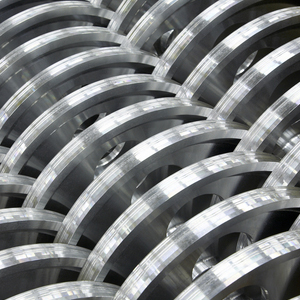Zinc plating
We offer rack and barrel zinc plating with any kind of passivates and top coats.
Zinc plating involves zinc metal being electrode-posited on to components. Electro zinc offers excellent corrosion resistance and sacrificial protection. A typically thicknesses of 10-12µm with passivation can be achieved, resulting in over 500 hours salt spray test.
We use an alkaline zinc solution, which is specially formulated to address the problems of adhesion failure associated with many other zinc solutions. Alkaline zinc is ideal for bore plating too. It provides a level surface deposit over the whole component. It also allows for much thicker deposits without any build up on the corners unlike acid zinc.
Standards:
- Def Stan 03-20
- BS 12329
- ISO 2081
- ISO 4520
- ISO 4042
- RoHS compliant
Zinc plating with passivate
Zinc plating is available with a range of trivalent passivates: clear, yellow and black to meet the EVL and RoHS directives. Trivalent passivate is the best and most advanced in operating available technology for meeting the end of life vehicle requirements (EOLVD); it is also easily recyclable.
Investigations have shown that the new trivalent systems show significant technical advantages:
-
Extreme resistance to thermal shock.
-
Superior corrosion protection and film uniformity
-
Non-toxic and chromium-free
Clear 1A: The clear passivate is used mainly as a decorative finish and has a clear / blue sheen to it.
Standard 2C: The majority of applications uses this standard passivate, which leaves an iridescent / rainbow finish.
Black F: The black passivate is used mainly as a decorative finish.
Stainless steel passivating
The stainless steel passivation process removes all surface impurities and stimulates the development of an oxide film which protects the component from rust. It is a popular way to reduce pitting corrosion in stainless steels.
The passivation film on stainless is very thin. It is important to passivate after cutting / abrasion; it is most common to passivate after welding.
Standards:
- Def Stan 03-2
De-embrittlement
Nuns Street Plating Ltd offers a de-embrittlement process which is undertaken prior to plating by using heat treatment technology. The ‘de-embrittle’ process is sometimes referred to as ‘hydrogen relief’ or ‘stress relief’.
This process strengthens items prior to plating, essential for removing hydrogen. This treatment is often requested when it is known that the item in question is prone to becoming weak and brittle after the plating process has been applied.


